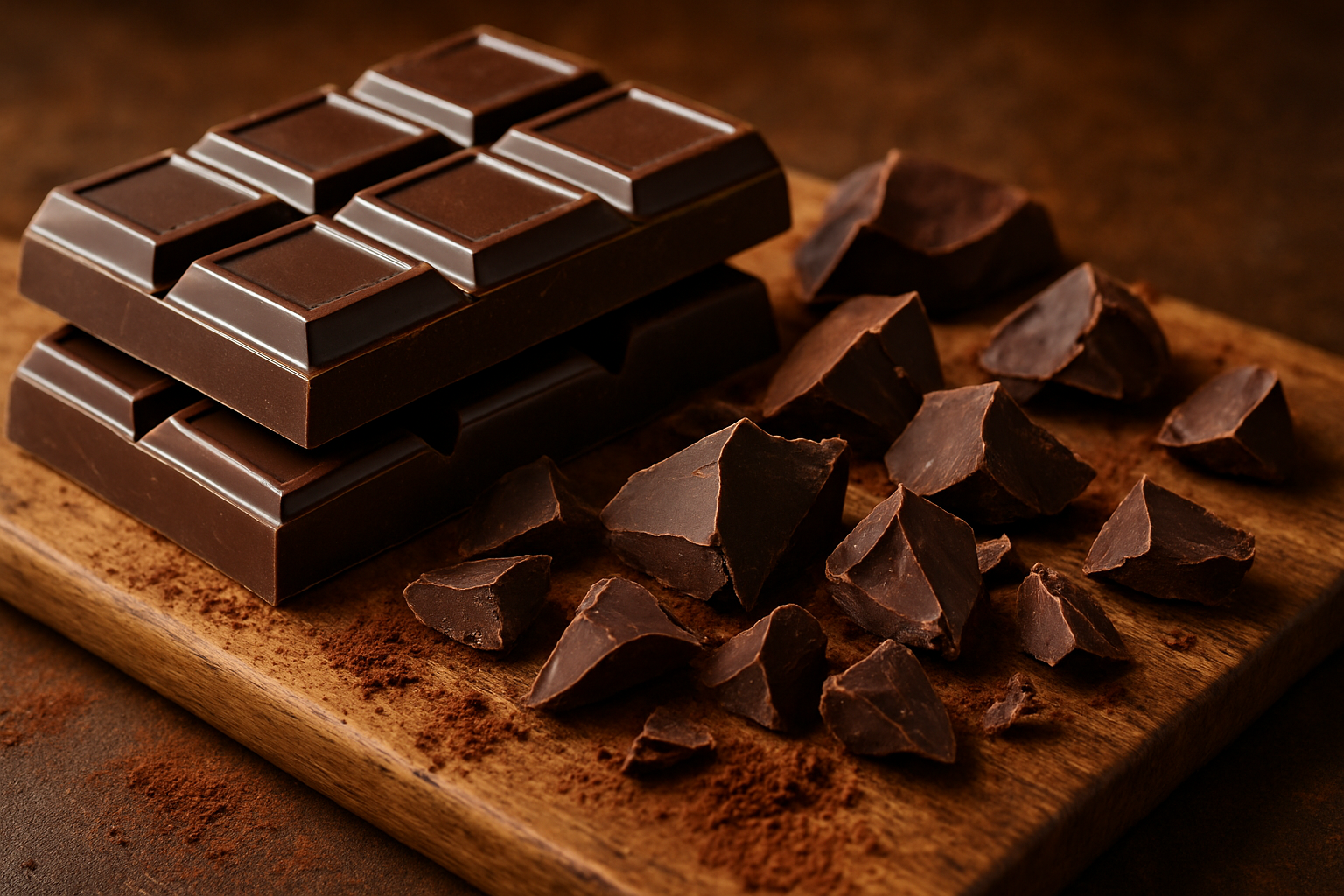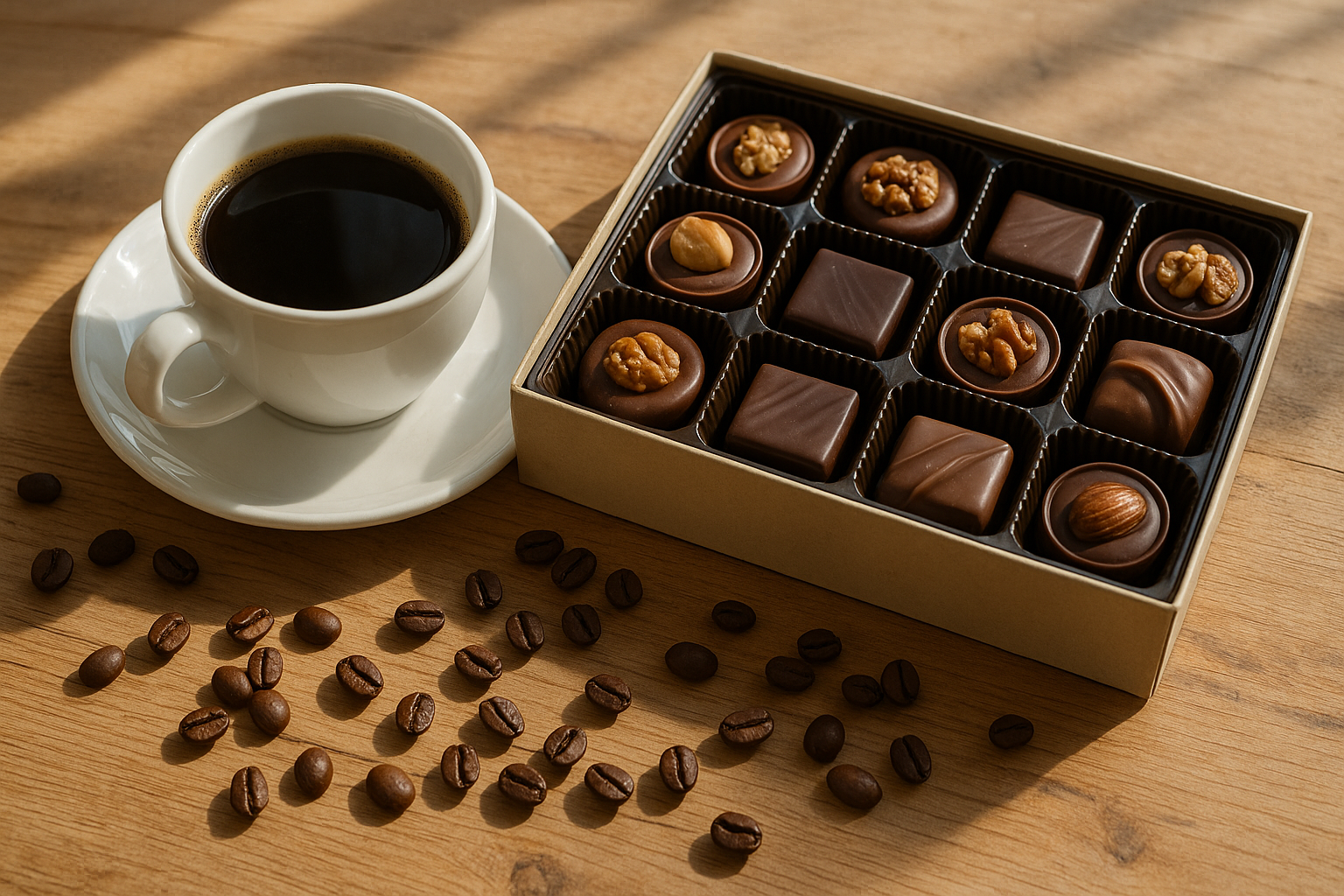What’s the best chocolate for baking? Well, it rather depends on what you are baking, and the result you want. There are of course some frequent questions, for instance, dark versus milk in brownies? Here we offer some thoughts and baking chocolate tips. For many, baking with chocolate is a sensory journey, a promise of rich aroma and indulgent flavour. Yet, the vast array of chocolate products available can be daunting. From chips to bars, unsweetened to milk, navigating the options to find the “best” type for baking can feel like a complex puzzle. The truth is, there isn't a single "best" chocolate for baking; rather, the ideal choice depends entirely on the desired outcome of your recipe. Understanding the different forms and their unique characteristics is key to unlocking truly exceptional chocolate baked goods.
The most crucial factor when selecting your best chocolate for baking is its cocoa content. This percentage indicates the amount of cocoa solids and cocoa butter present, directly influencing the chocolate's bitterness, sweetness, and melting properties. So the first baking chocolate tip is know what you are baking and what you want the result to be.
Friars
Rich and indulgent Belgian 70% dark chocolate buttons are a true delight for the dark chocolate connoisseur. They're also one of our firm favourites and a canny baking chocolate tip when dark melting is required. They are possibly some of the best chocolate for baking brownies.

Caramel flavoured chocolate buttons are delicious drops of smooth Belgian milk chocolate with rich hues of golden brown caramel...a true delight for the taste buds! These are a cracking caramel addition to your baking efforts.
Friars have a great range of quality chocolate that can help your baking reach the heights. Be it dark versus milk for brownies options or just plain old top dark making the best chocolate for baking.

Unsweetened Chocolate (100% Cocoa):
Also known as baking chocolate or bitter chocolate, this variety contains no added sugar. It's intensely bitter and has a firm texture. Unsweetened chocolate is rarely eaten on its own but is indispensable in recipes where you want deep chocolate flavour without added sweetness, allowing you to control the sugar level independently. It provides a robust, foundational chocolate taste in brownies, cakes, and cookies. Kind of answers the dark versus milk in brownies question. When substituting, (milk which is less bitter) be prepared to adjust the sugar content in your recipe significantly. This is another baking chocolate tip to use when you bake.
Bittersweet Chocolate (typically 60-85% Cocoa):
This is a popular choice for baking due to its balanced flavour profile. It offers a pronounced chocolate taste with less sweetness than semi-sweet. The higher cocoa content contributes to a deeper, more complex flavour and a desirable bitterness that can cut through the richness of other ingredients. Bittersweet chocolate melts smoothly and is excellent for making ganaches, truffles, and sophisticated desserts where a strong chocolate presence is desired. Its versatility makes it a go-to for many professional bakers.
Semi-Sweet Chocolate (typically 35-60% Cocoa):
Often interchangeable with bittersweet in many recipes, semi-sweet chocolate is sweeter and less intense. It's a fantastic all-rounder for general baking, yielding a classic chocolate flavour that's widely appealing. Semi-sweet chocolate chips are ubiquitous in cookies, muffins, and quick breads. While it offers a good chocolate flavour, it might not provide the same depth as a higher cocoa content chocolate, making it less ideal for recipes where chocolate is the star, such as a rich chocolate torte.
Milk Chocolate (typically 10-35% Cocoa):
Characterised by its creamy texture and sweet, mild flavour, milk chocolate contains milk solids in addition to cocoa. While delicious for eating, its lower cocoa content and higher sugar and milk fat content make it a trickier choice for baking. It melts very quickly and can be prone to seizing (becoming stiff and grainy) if overheated. It’s a good baking chocolate tip to be aware of how quickly milk chocolate can melt and stiffen. Its sweetness can also overwhelm a recipe. However, it excels in applications where a gentle, creamy chocolate flavour is desired, such as in certain puddings, mousses, or for creating a milder chocolate chip cookie. If using milk chocolate, ensure your recipe accounts for its sweetness and delicate melting properties. It stands to reason then when looking at dark versus milk in brownies, the latter is pretty much not the one to choose.
White Chocolate (no cocoa solids, only cocoa butter):
Technically not "chocolate" in the traditional sense as it contains no cocoa solids, white chocolate is made from cocoa butter, sugar, milk solids, and vanilla. It has a rich, creamy texture and a distinctly sweet, buttery flavour. White chocolate melts easily and can be temperamental. It’s best used in recipes where its unique flavour is intended to stand out, such as in white chocolate macadamia nut cookies, blondies, or as a coating for truffles.
Beyond cocoa content, the form of chocolate also plays a role:
Baking Bars/Blocks:
These are often preferred by serious bakers as they offer the most control and are considered by many to be the best chocolate for baking. They are typically made with higher quality ingredients and designed to melt smoothly and evenly. Breaking down a bar allows for precise measurement and better melting consistency than chips, which often contain stabilizers to hold their shape.
Chocolate Chips:
Convenient and readily available, chocolate chips are formulated to hold their shape during baking. This is achieved by having less cocoa butter than baking bars and sometimes incorporating stabilizers. While great for cookies where you want distinct pockets of chocolate, they may not melt as smoothly or evenly for ganaches or glazes. Our baking chocolate tip would be to use Chips for your cookies.
Cocoa Powder:
Not a solid chocolate, but a vital chocolate baking ingredient. Natural cocoa powder is unsweetened and acidic, contributing to leavening when combined with baking soda. Dutch-processed cocoa powder is treated to be less acidic, darker, and milder in flavour, often paired with baking powder. Both offer intense chocolate flavour without adding fat, making them ideal for cakes, brownies, and sauces where a deep colour and pure chocolate taste are desired.
Chocolate Wafers/Pistoles:
These are professional-grade chocolate pieces, often in disc or oval shapes, designed for even melting and tempering. They are typically made from high-quality couverture chocolate, meaning they have a high percentage of cocoa butter, resulting in a superior snap and shine once cooled. They are excellent for tempering, dipping, and sophisticated desserts.
In conclusion, the "best" chocolate for baking is the one that best suits your recipe's needs and your desired flavour profile. For deep, complex chocolate flavour, reach for bittersweet or unsweetened. For a classic, balanced taste, semi-sweet is a reliable choice. If creaminess and a milder sweetness are your goals, milk or white chocolate might be appropriate, used with caution. Experimentation is key; understanding the characteristics of each type empowers you to choose wisely and create chocolate masterpieces every time.







